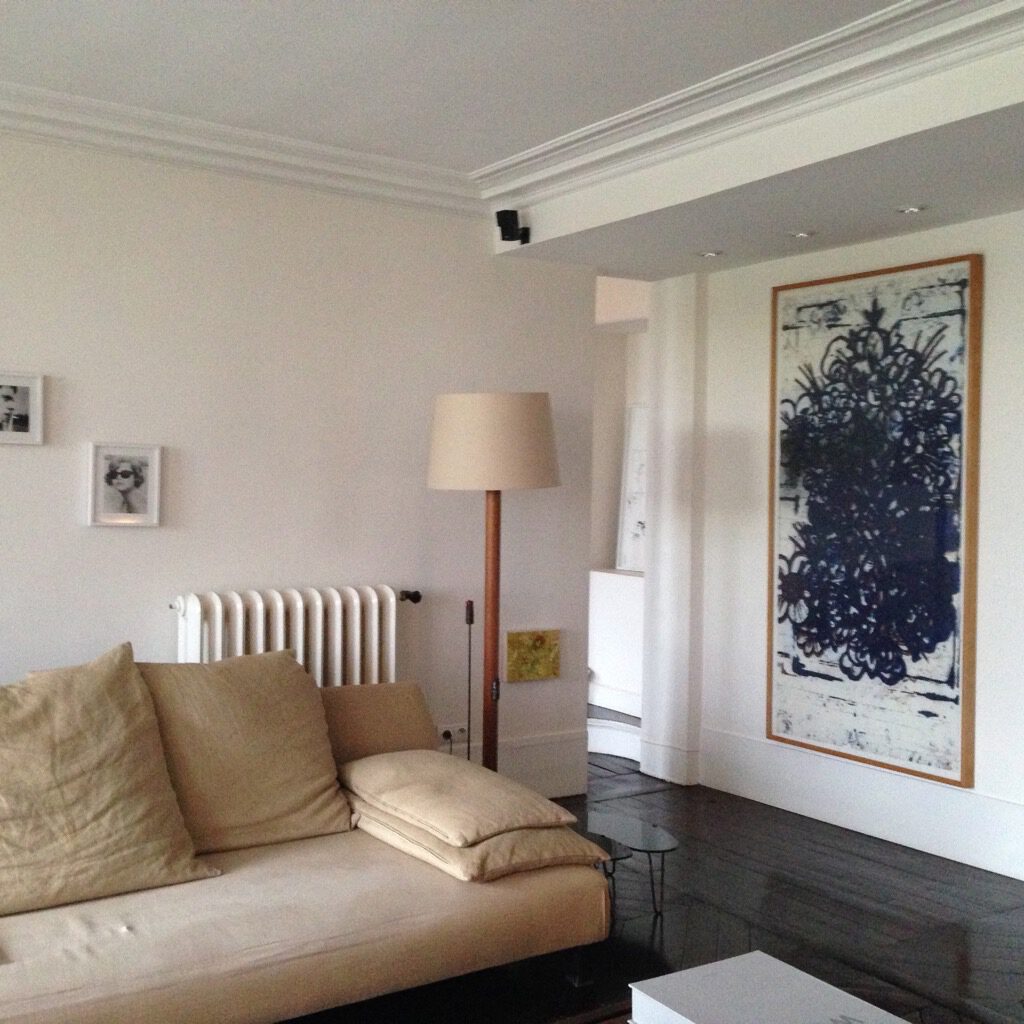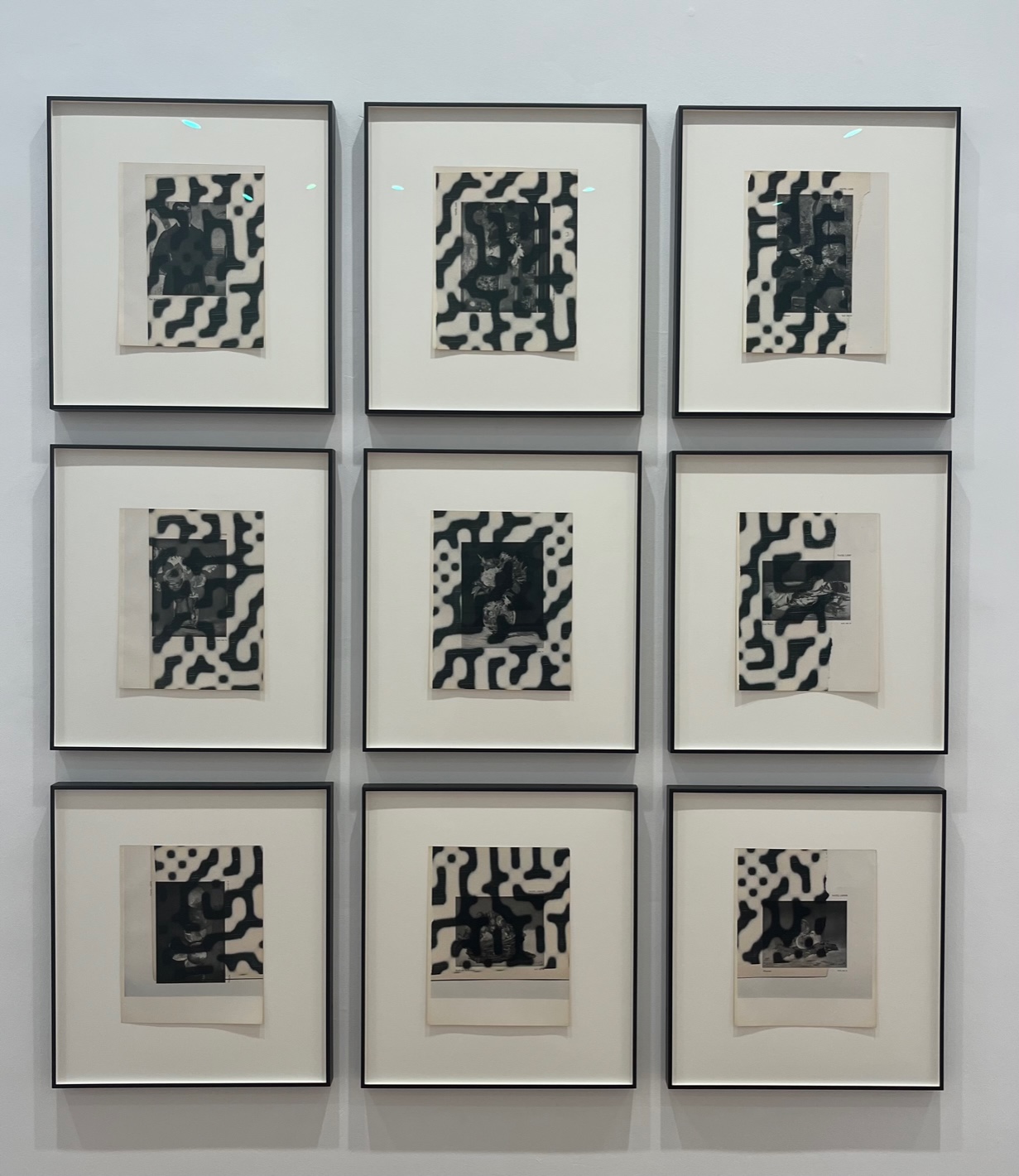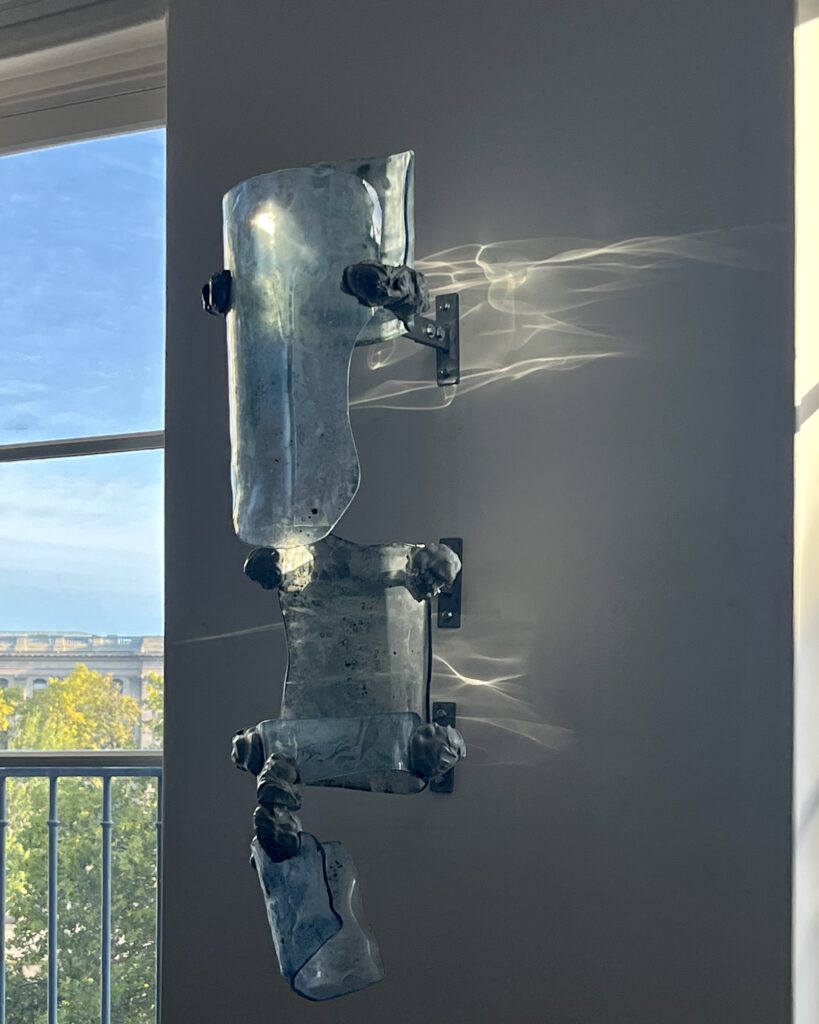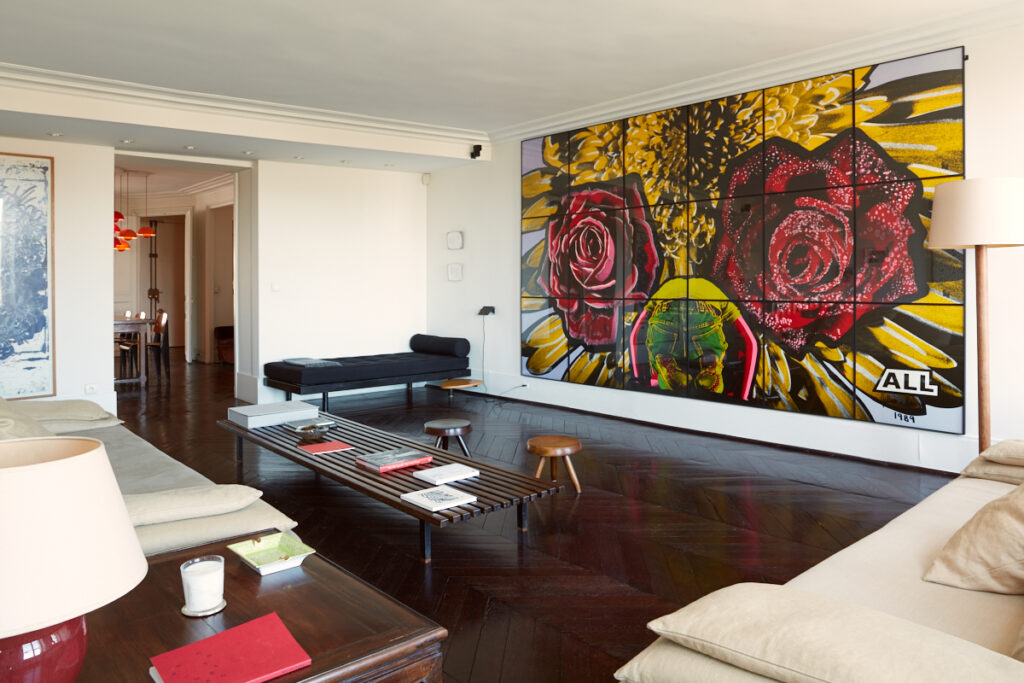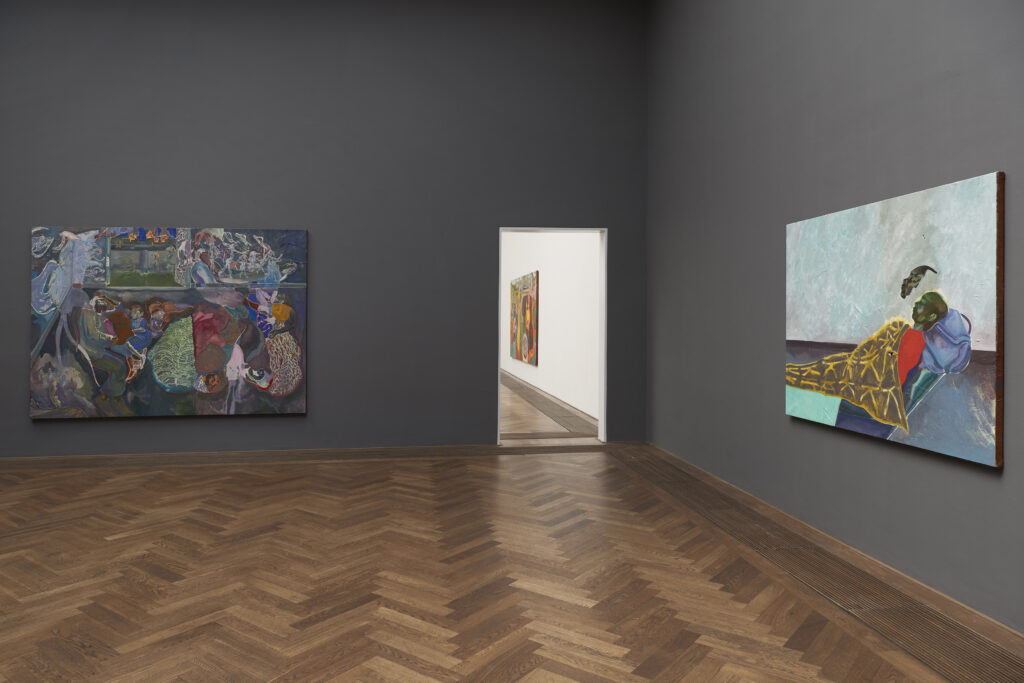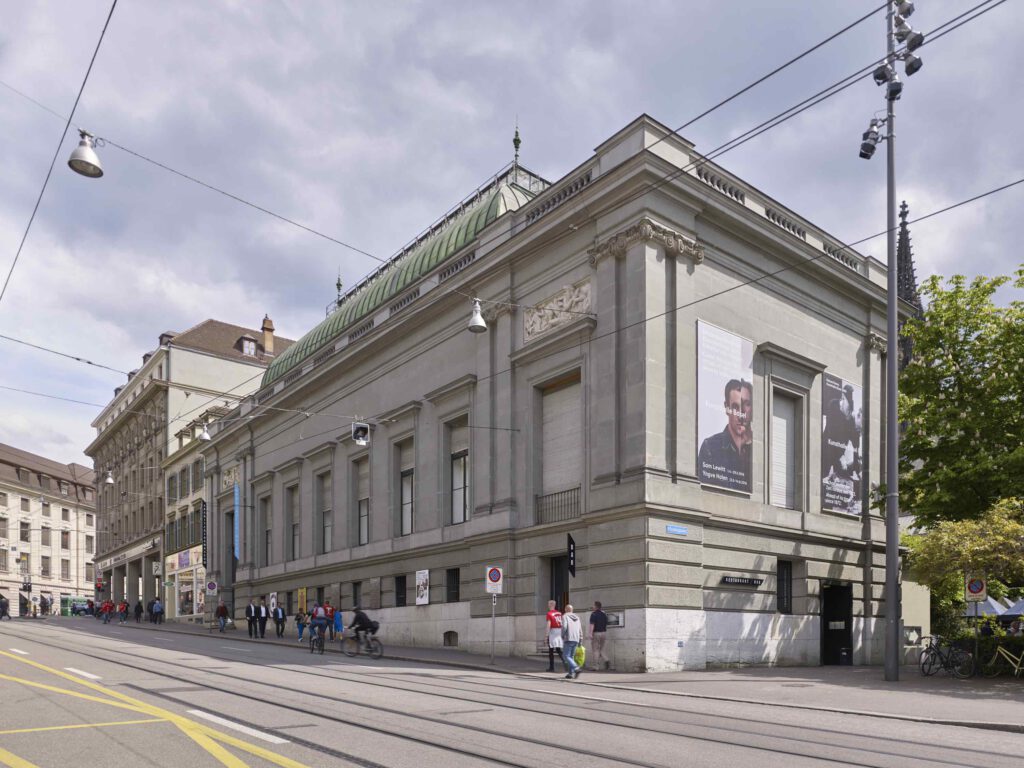“If you are interested in culture, it is important to give something back.”
Collectors Interview | Martin Hatebur
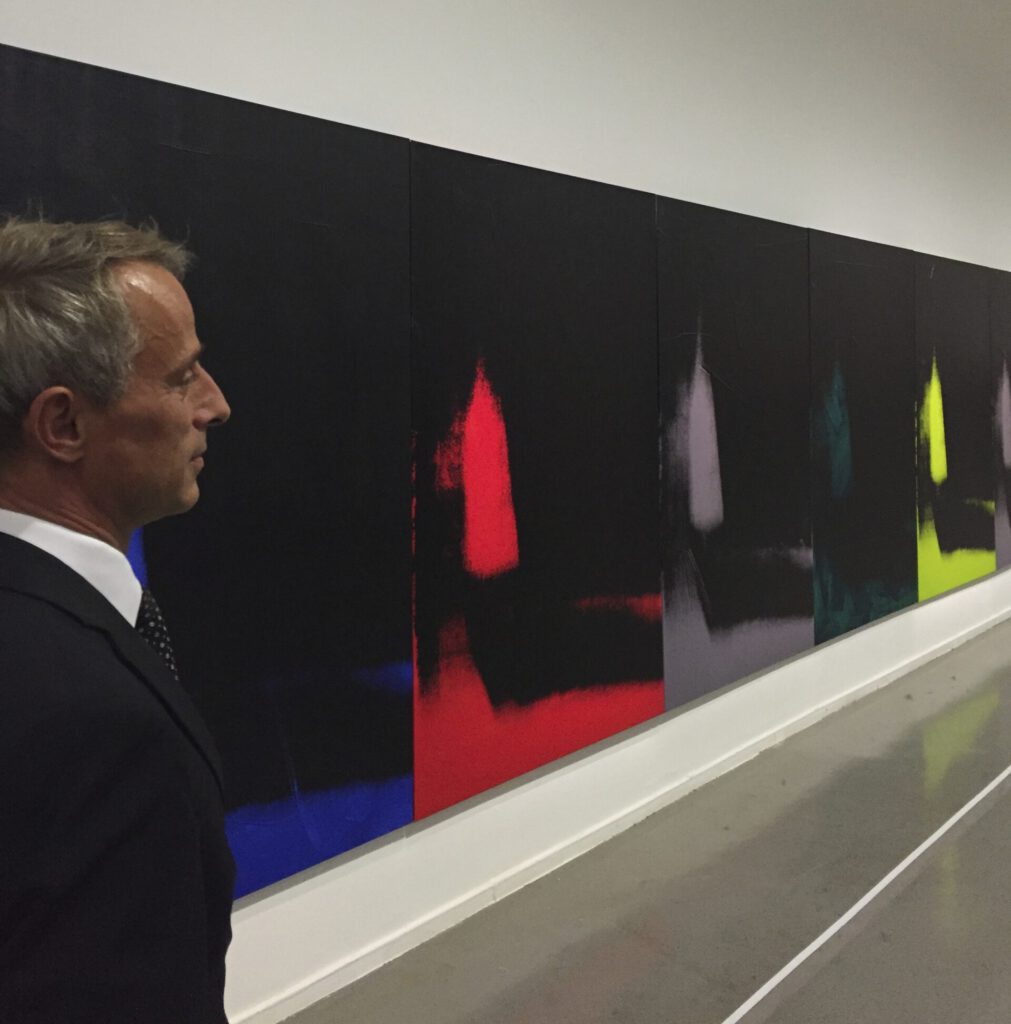
Swiss lawyer and passionate art collector Martin Hatebur has been president of Kunsthalle Basel since 2008. He is also actively involved in contemporary art in various capacities, including president of the St. Moritz Art Film Festival, on the board of Lafayette Anticipations in Paris, the Swiss Association of Art Collectors, the Foundation for Art and Design in Basel, and the Giancarlo e Danna Olgiati Foundation. He believes that everyone can – and should – support the arts.
viennacontemporary: How did your love of art come about?
Martin Hatebur: It came about through an encounter with an Austrian – namely Peter Pakesch, the director of Kunsthalle Basel at the time. I met him in Basel and he dragged me to the Kunsthalle (laughs), which must have been around the beginning of the 90s. My job as a lawyer is sometimes quite dry, and Peter Pakesch convinced me that art is something exciting.
Which artists were amongst the first you discovered?
Peter Pakesch had a gallery in Vienna where he showed Albert Oehlen, Martin Kippenberger, … that generation. He then also brought that to the Kunsthalle. But the exhibition that fascinated me the most was by Christopher Wool. It was one of his first exhibitions in Europe; it came right after his exhibition at Moca in Los Angeles by Ann Goldstein. I was also very interested in him as an artist; the first work I ever bought was by him, a flower painting. I still think he’s a very great artist.
Hatebur’s first art purchase ever: Christopher Wool, Untitled, 1994, Enamel on paper.
Courtesy of Martin Hatebur
A lot of time has passed since then. You have been president of Kunsthalle Basel for 16 years now – how do you manage that alongside your work?
In the beginning, there wasn’t too much to do, so it went well alongside work. And then it became more and more, I took on many legal tasks and fundraising. In the meantime, I work about 30 percent of my time unpaid for the Kunsthalle. Our annual budget is three million francs, we receive just under a million from the city, the restaurant brings in 500,000, and renting out part of our building to the Stadtkino and the Swiss Architecture Museum also brings in a little. Together with Elena Filipovic, we then raise about a million a year through private contacts.
What influence does this pro bono activity have on your collection?
Through the Kunsthalle, I get to discover a lot of new artists, and I often buy a work that was exhibited at the Kunsthalle.
Hatebur’s latest purchase: Wade Guyton, Galerie Matthiesen, Ausstellung, Edouard Manet, 1928, 6. Februar bis 18. März, Vol.II, 100 to 108, 2022, Lithograph on book page. Courtesy: Martin Hatebur
What qualities does a work have to have for you to like it?
I follow my instinct. And – you are hardly allowed to admit this nowadays – it must speak to me aesthetically. It can happen that I don’t really like something at first and only learn to love it after a while. There is also institutional art that I like very much. Raphaela Vogel, for example. She practically only makes installations, which look great in institutions, but you would have to have a lot of space to fit them in your private home. Nairy Baghramian is an artist I follow intensively and who I bought a lot. She also creates huge artworks, but you can find things that have room in an apartment.
Your collection includes about 300 works. Do you live with all your art?
I don’t have anything in my collection that I wouldn’t want in my home. Fortunately, I have four houses – in Basel, Paris, Stromboli, and St. Moritz – and they are all stocked with my art. I mainly collect paintings – abstract, as well as figurative, but also small sculptures. I have very little video art. I think it’s great in institutions – I’m also president of the St. Moritz Art Film Festival and there we only show art films – but at home it’s not so easy.
Located in Hatebur’s Paris apartment: Nairy Baghramian, Dwindler (Jut), 2019, glass, zinc-coated metal, and colored epoxy resin.
Courtesy of Martin Hatebur
Do you see buying art as a private hobby or also as a financial investment?
Well, if something costs a few thousand francs – certainly that’s a lot of money, but I don’t worry about it too much. If something costs over 100,000 francs, however, I do wonder if it will retain its value. I never buy very early but rather wait until I’m sure I like it. Nowadays, the prices of young art have often become very expensive.
In what way?
The other day I saw an important drawing by Cy Twombly in an auction for 200,000 pounds – and a work by Issy Wood cost almost the same. Young art is great to discover, but the prices are just crazy.
There might be a lot of younger collectors who think it’s cooler to have a work by Issy Wood than by Cy Twombly because it’s the same generation.
Or, because they can sell it more expensively in two years… I saw her exhibition at yette Anticipations, where I am also a board member. That was accompanied by a concert by Issy Wood, which was fantastic. She writes her own songs. It was great to see the exhibition in this context. When you read the titles of her works and understand the background, you see the art differently…
You are currently focusing on buying one larger work rather than several smaller ones. Is that a logical conclusion of your experience as a collector?
If you buy ten small works that end up in storage, it’s a shame and you end up paying more for them than if you buy one more expensive work. For me, that’s also a question of space.
Gilbert and George, „All“, 1989,18 hand-dyed photographs in artist’s frames – in the collector’s Paris home. Courtesy of Martin Hatebur
What tips would you give to prospective collectors whose walls are still empty?
It should be obvious, but: you should buy what you like, instead of listening to people who say that these artists will go up in price and those will go down…Of course, you can do that, but then this is not collecting to me. Collectors, in my opinion, are people who are very interested in the artists and their art and want to live with it. If you want to collect, I’d rather recommend building up groups of works by the same artists. That is, to buy positions of the same artists over the years to accompany them in their development. I also find it important to be involved in institutions. You learn a lot there and develop a good eye.
You are also very active as a patron.
I’ve been very active at Kunsthalle Basel since Peter Pakesch’s time, and together with my partner, I support two exhibitions a year at the Kunsthalle. I also support other institutions, such as the Swiss Institute in New York and others, but Kunsthalle Basel is the closest to my heart. By the way, I don’t think that only collectors have the responsibility to support institutions, but also successful artists. They do very little in this regard, there is little awareness. They could also support exhibitions of young artists. In my opinion, it doesn’t matter how you have earned your money – if you’re interested in culture, it’s important that you also give something back.
Does that apply to all people?
I do think that individuals have a responsibility to financially support institutions. So do the state and government. Art is part of our culture and the state must contribute to it. Companies, too! At Kunsthalle Basel, we have many private individuals who support us, but very few companies. There is probably too little visibility. But we have all these biotech companies in Basel, Novartis, and Roche that invest in research, and actually, we do the same – we invest in research, in the future. Many of the artists we have exhibited are later shown in larger museums. We are the discovery platform, so to speak.
Installation view, Michael Armitage, You, Who Are Still Alive, Kunsthalle Basel, 2022, looking (from left to right) at, Ciru (Kericho January 2008), 2022, and, You, Who Are Still Alive, 2022. Photo: Philipp Hänger / Kunsthalle Basel
Contemporary visual art is still often perceived as elitist. How do you anchor it in the center of society?
A lot has already been done. At Kunsthalle Basel, the number of visitors has risen drastically. We now have almost 40,000 visitors a year, many of them young people. And that in a small city and an institution purely for contemporary art. Ten years ago it was only half that number. I also see similar trends in Paris and London. People have more information and interest in art. A lot of work has been done by institutions and museums, and especially by fairs. At the “Paris+ par Art Basel” there were many families with strollers.
You live in Basel as well as in Paris – how do you rate Paris+ par Art Basel and is it a competition for Basel as a location?
I think it’s a very good idea and I’m also not worried that Basel will suffer. Especially when I look at the advantages of Basel: the organization is perfect, they have much more experience. Then the duty-free warehouses there are very attractive for buyers and also the security is greater than in Paris, as you saw with all the alerts in the Louvre. The concentration on art is of course also much greater in Basel, while in Paris you have thousands of competing events. But the young collectors would certainly rather come to Paris than to Basel. And of course, the decisive factor is which buyers come, and it’s not easy to influence that. We are discussing a lot in Basel what we can do to remain attractive, and we have also been in contact with the hotels about prices.
After all, there are fantastic local collectors in Switzerland who are very loyal to Art Basel.
Art is in the DNA of Basel’s citizens. Basel has 40 museums for a population of about 250,000. Do you know the Picasso story? In the ’60s, collectors had lent two works by Picasso to the Kunstmuseum. When the collectors’ airline went bankrupt, they had to sell the works, but the museum didn’t have the money to buy them. So the people of Basel took to the streets and collected money, organized fundraising parties, shined shoes, and sold meals for this good cause. In the end, there was even a vote on whether the city of Basel should raise the last missing 6 million to buy the two works, and the people of Basel gave their approval. Picasso himself was so moved by the story that he donated four more works to the city of Basel.
Street view of Kunsthalle Basel, 2016, Photo: Yohan Zerdoun / Kunsthalle Basel
What does an art fair have to offer to be internationally attractive?
The most important thing is the quality of the galleries! Then, of course, the exhibitions around the fair. If there’s a big Schiele exhibition happening in Vienna parallel to the fair, I can well imagine that it’s one more good reason to come. And the VIP program, of course, if it’s exciting. The most interesting things are always the private collections. In the beginning, I had the feeling that many more opened their houses. There were also far fewer collectors and people knew each other. When I went to the fair in Mexico for the first time, it was fantastic: you were invited everywhere, you looked at everything. But the Viennese are also known to be very hospitable.
Yes, the city is doing well, and the art scene is very active.
Last week I saw Peter Pakesch and he was very enthusiastic about how well Vienna is developing, with its range of off-spaces and young art. That’s always great when a city develops from the inside out. It is where real energy and liveliness emerge.

